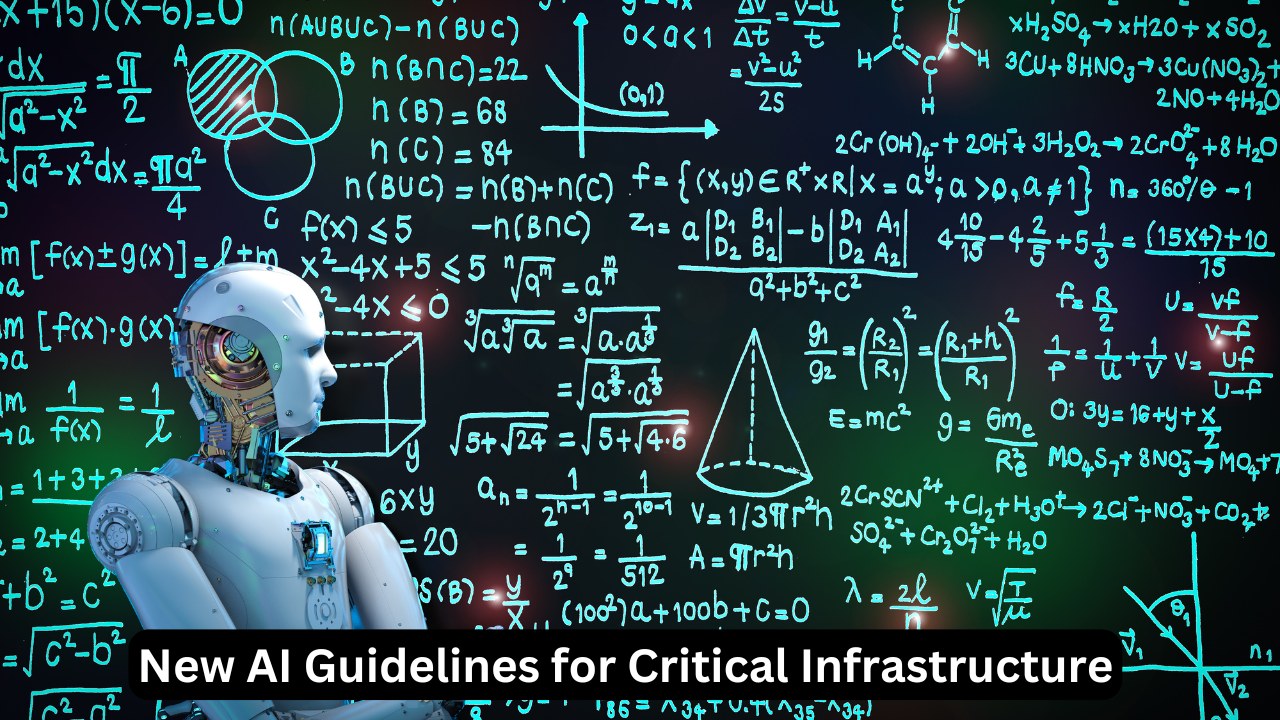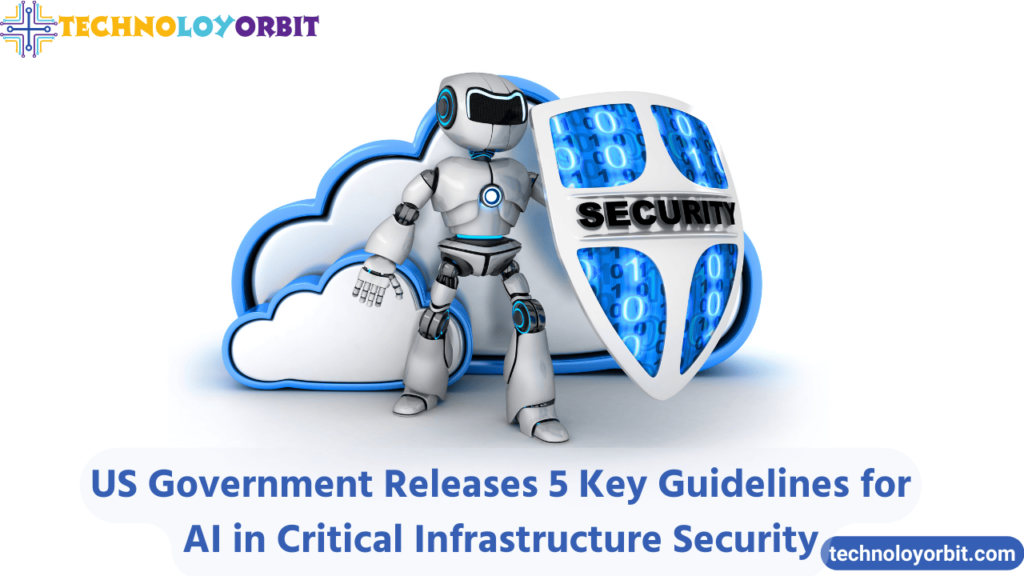AI in critical infrastructure enhances system efficiency and security, with new US government guidelines ensuring safe deployment and reducing risks in sectors like energy, water, and transportation.
The rapid advancement of artificial intelligence (AI) has led to its increasing integration into various sectors, especially critical infrastructure such as power grids, water systems, air travel, and more. The potential benefits of AI in enhancing efficiency, security, and operational capabilities of these essential systems are immense. However, these advancements also raise important concerns regarding the security, safety, and ethical implications of AI deployment in such vital sectors.
In response to these concerns, the US government, through the Department of Homeland Security (DHS), recently released a set of guidelines for using AI in critical infrastructure. These guidelines aim to ensure that AI technologies are implemented in a way that maximizes benefits while safeguarding national security and public safety. This article explores the newly introduced framework, its implications, and the broader impact of AI on critical infrastructure.
What is Critical Infrastructure and Why is AI Integration Important?
Critical infrastructure refers to the physical and cyber systems essential for the functioning of a society. These include energy grids, transportation systems, water networks, healthcare facilities, and financial services, all of which are vital to public safety, economic stability, and national security. As the world becomes more digitized, these infrastructures increasingly rely on AI technologies to improve performance, enhance security, and streamline operations.
For instance, AI can help optimize power distribution, predict system failures, automate traffic control, and even assist in disaster management. However, the integration of AI also presents challenges, including cybersecurity risks, ethical dilemmas, and the potential for misuse.
Key Highlights of the US Government’s New AI Guidelines for Critical
Infrastructure

Infrastructure
The newly released AI guidelines by the US government are designed to address the challenges of integrating artificial intelligence into critical infrastructure systems. The guidelines, created by the Department of Homeland Security (DHS) in collaboration with the Artificial Intelligence Safety and Security Board, outline key principles that AI developers and infrastructure operators must follow. Here are the main takeaways from these guidelines:
1. Evaluation of Potentially Dangerous AI Capabilities
AI developers are now required to evaluate the potentially dangerous capabilities of their AI products before deployment. This includes assessing the risks posed by autonomous decision-making systems and ensuring that AI applications do not unintentionally compromise the safety and security of critical infrastructure.
For example, in the context of power grids, AI systems could be used to predict and prevent outages. However, if these systems are not properly evaluated, they might fail to detect certain vulnerabilities, leading to catastrophic disruptions.
2. Human-Centric AI and Privacy Protection
One of the central tenets of the new framework is ensuring that AI systems are aligned with human-centric values. This means that AI should be designed to enhance human welfare and not replace human judgment. Additionally, privacy protection must be prioritized, especially when AI systems are handling sensitive data such as personal information or critical operational details of infrastructure.
3. Enhanced Cybersecurity Protocols
With the growing threat of cyberattacks on critical infrastructure, stronger cybersecurity protocols are now necessary to address AI-related risks. The guidelines recommend that infrastructure operators adopt robust security measures to prevent AI systems from becoming entry points for malicious actors. Furthermore, transparency in how AI is used in critical infrastructure is also encouraged to build public trust.
4. Supply Chain Security for Cloud and AI Technologies
Cloud computing plays a significant role in enabling AI technologies. Therefore, cloud infrastructure providers must vet their hardware and software suppliers to ensure that their products are secure and reliable. The guidelines emphasize that operators should protect the physical security of data centers to prevent tampering and unauthorized access.
5. State and Local Government Involvement
The new AI guidelines also extend to state and local governments, encouraging them to adopt similar AI safety and security protocols. These guidelines help ensure that AI technologies are not just implemented at the federal level but are also incorporated into local infrastructure systems to ensure nationwide security and safety.
Summary of Key Guidelines for AI in Critical Infrastructure
| Guideline Category | Description |
|---|---|
| Evaluation of AI Capabilities | Assessing the risks and dangerous capabilities of AI before deployment. |
| Human-Centric AI and Privacy | Ensuring AI aligns with human values and protects privacy. |
| Cybersecurity Protocols | Strengthening cybersecurity against AI-related vulnerabilities. |
| Supply Chain Security | Securing hardware and software used in AI-driven systems. |
| State and Local Government Engagement | Extending guidelines to state and local governments. |
The Importance of Transparency in AI Applications

Transparency is a critical factor in the responsible use of AI in critical infrastructure. It ensures that both the public and stakeholders understand how AI systems make decisions, especially in high-stakes environments. Whether it’s controlling the power grid or managing water distribution, transparency is key to building trust and mitigating the risks associated with AI.
The guidelines suggest that AI developers and infrastructure operators disclose how AI systems are used and what data they rely on. This will allow the public to assess potential biases, errors, or security vulnerabilities in the system. Greater transparency also enables regulatory bodies to monitor AI deployments and ensure compliance with established safety standards.
Addressing the Ethical Concerns of AI in Critical Infrastructure
The introduction of AI into critical infrastructure systems also raises ethical concerns that need to be addressed. One of the main issues is the autonomy of AI systems and their potential to make decisions that could have significant consequences for public safety. For example, an AI system controlling air traffic must be designed with stringent safety protocols to prevent accidents or misjudgments.
Ethical concerns also extend to bias in AI algorithms. If AI systems are not properly trained or tested, they may inadvertently produce biased outcomes, which could harm vulnerable populations. This is why the new guidelines emphasize the importance of designing AI with fairness and accountability in mind.
The Role of AI in Modernizing Critical Infrastructure
AI offers a unique opportunity to modernize aging infrastructure and improve its resilience. In sectors like energy and transportation, AI can help predict demand, optimize resource allocation, and prevent system failures. For instance, in the energy sector, AI can forecast energy consumption patterns and adjust the grid accordingly, ensuring efficient energy distribution and reducing wastage.
In addition to optimizing efficiency, AI can play a crucial role in disaster management and recovery. During a natural disaster, AI-powered systems can assist in real-time data analysis, helping authorities make informed decisions and expedite recovery efforts.
Solutions to the Challenges of AI in Critical Infrastructure

Despite the significant potential of AI, its deployment in critical infrastructure comes with challenges. Here are some potential solutions to mitigate these challenges:
- Rigorous Testing and Validation: AI systems must undergo extensive testing and validation to ensure that they can function safely and effectively in high-risk environments. This includes simulating various real-world scenarios to identify potential weaknesses.
- Collaboration Across Sectors: Governments, private industry, and academic institutions should collaborate to develop best practices for integrating AI into critical infrastructure. This will ensure that AI systems are both secure and innovative.
- Ongoing Monitoring and Updates: Since AI technologies evolve rapidly, continuous monitoring and periodic updates to the AI systems are necessary to keep up with new risks and advancements.
Frequently Asked Questions (FAQs)
1. What are the new guidelines for AI in critical infrastructure?
The new guidelines are a set of recommendations released by the US Department of Homeland Security aimed at ensuring the safe and responsible use of AI in critical infrastructure sectors such as power grids, water systems, and transportation.
2. Why is transparency important in AI deployment?
Transparency ensures that the public and stakeholders understand how AI systems make decisions, which helps build trust and ensures accountability in high-stakes environments like critical infrastructure.
3. How does AI benefit critical infrastructure?
AI can optimize operations, predict failures, enhance security, and improve decision-making in sectors such as energy, transportation, and healthcare.
4. What are the risks of AI in critical infrastructure?
AI can introduce risks such as cybersecurity vulnerabilities, biased decision-making, and the potential for system failures if not properly tested and monitored.
5. How can the ethical concerns of AI be addressed?
Ethical concerns can be mitigated by designing AI systems with fairness, accountability, and transparency in mind, and by conducting rigorous testing to ensure that AI decisions are safe and unbiased.
Conclusion
The US government’s new AI guidelines for critical infrastructure represent a significant step toward ensuring the responsible and secure integration of artificial intelligence into vital sectors. As AI in critical infrastructure continues to evolve, these guidelines will help shape its deployment, balancing innovation with safety and security. By following these recommendations, AI can become a powerful tool for enhancing the efficiency and resilience of critical infrastructure systems, while minimizing the risks to public safety and national security. Please follow out blog Technoloyorbit.



